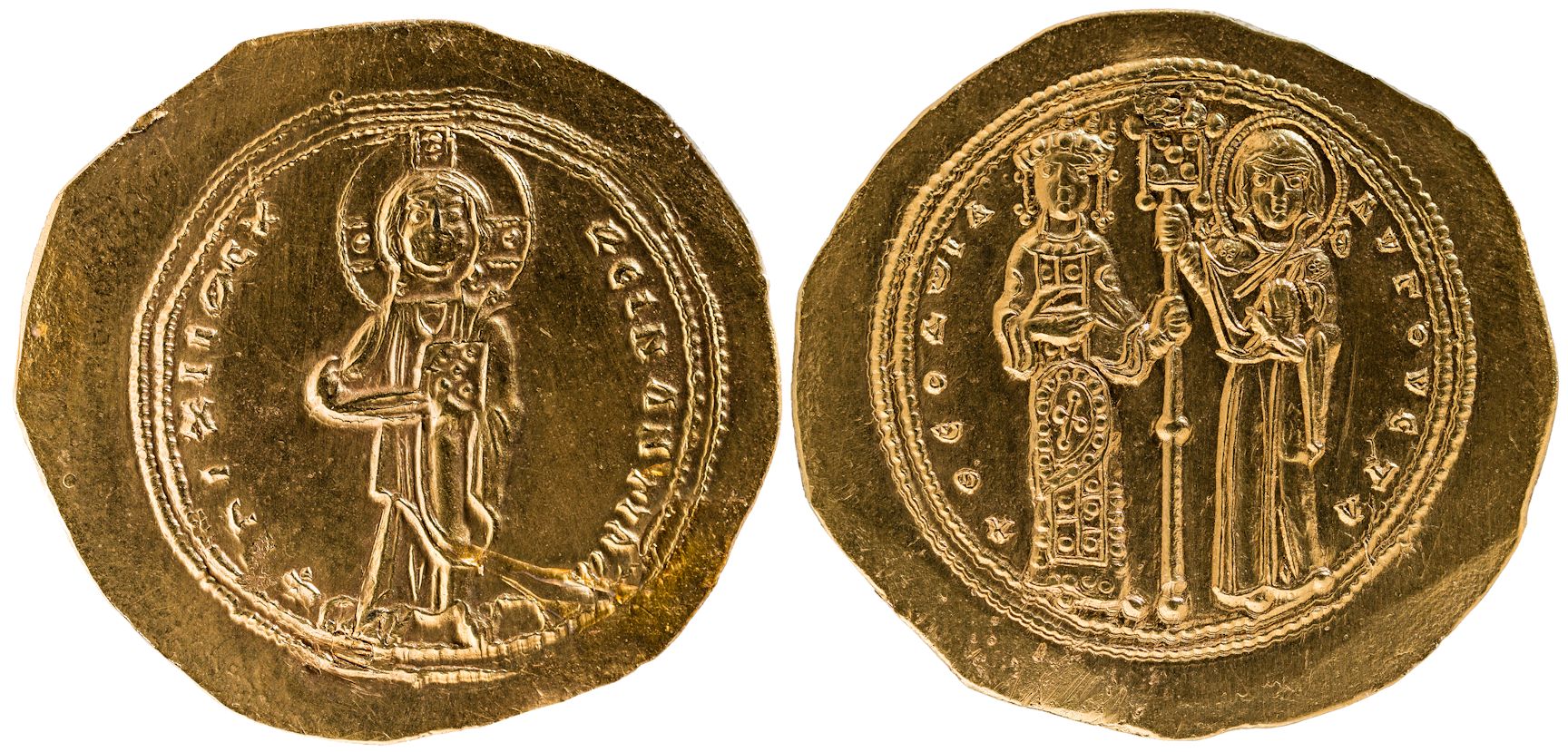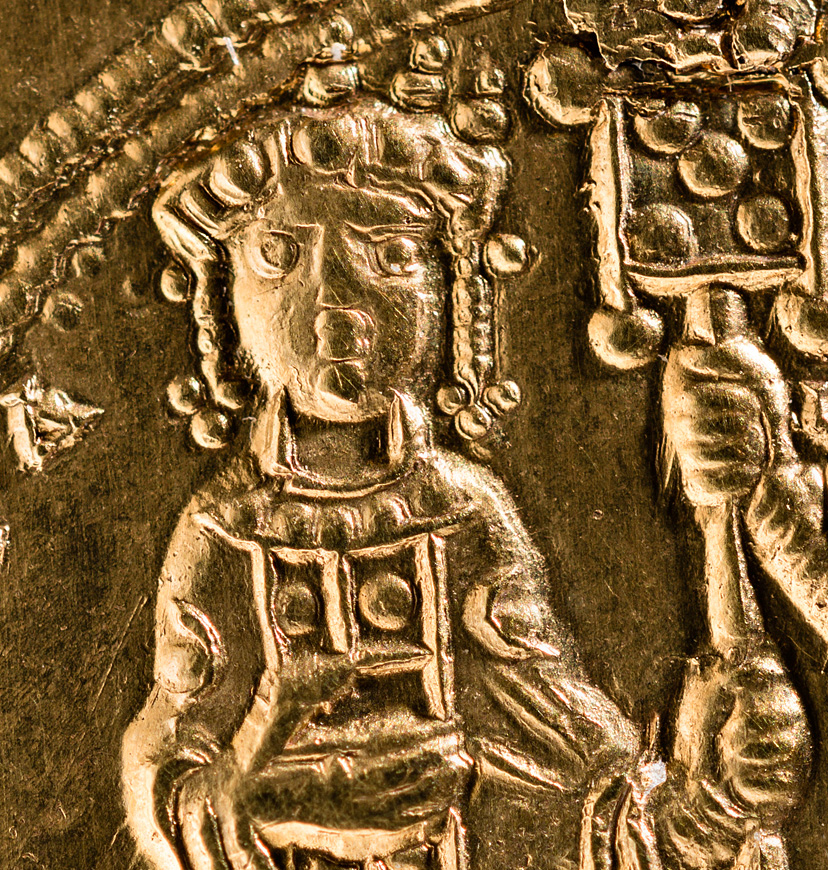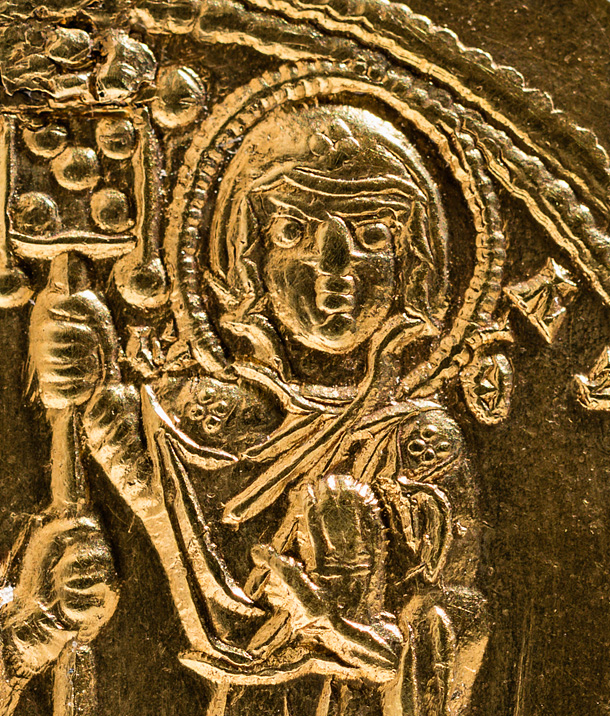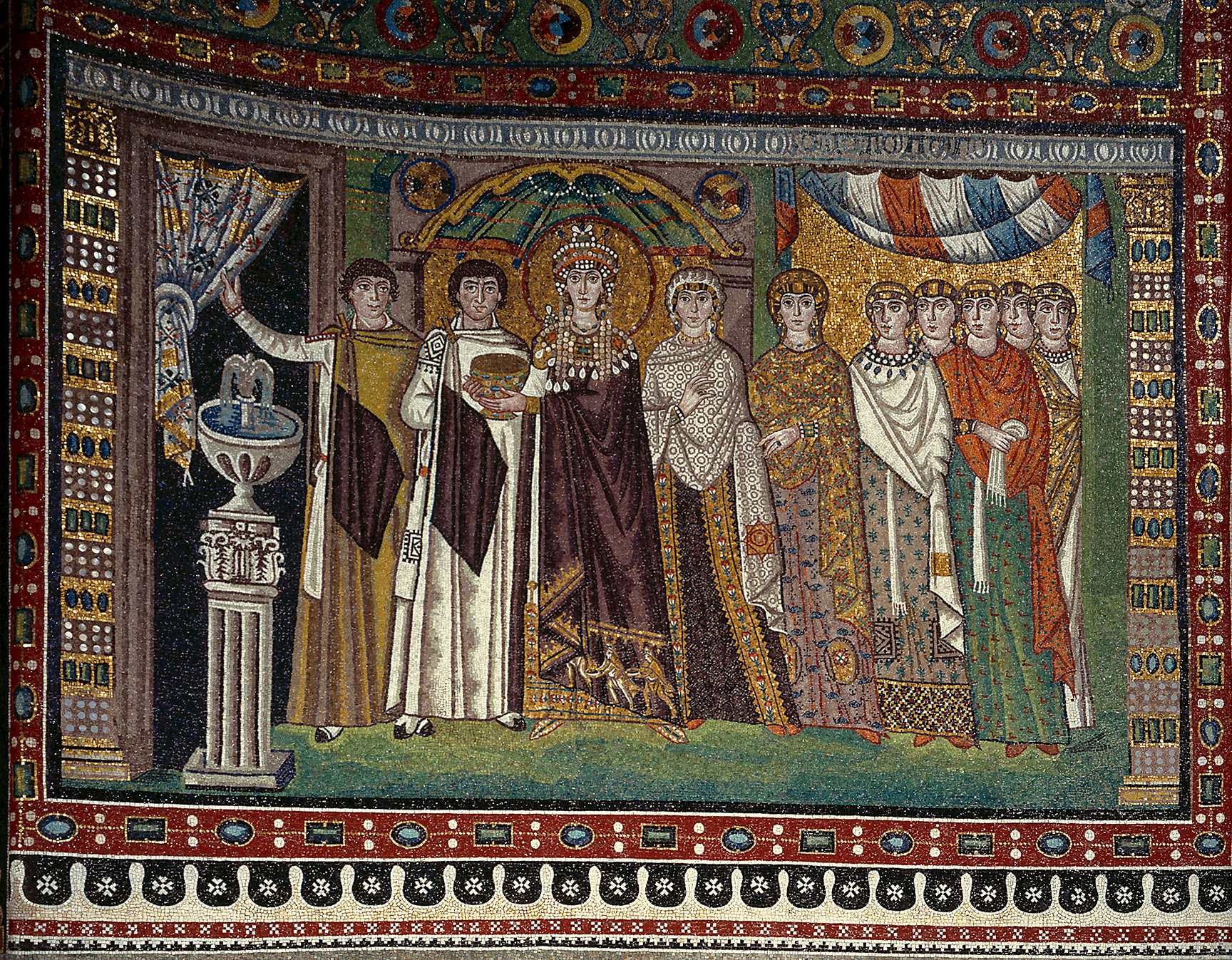
Insignia of power Histamenon, Empress Theodora
Byzantine Empire
Empress Theodora (1055-1056)
Histamenon, 1055-1056
Mint: Constantinople
Material: Gold
Weight: 4.40g
Diameter: 25.7mm
The Byzantine Empire was one of the most significant and powerful states in the Middle Ages. It emerged from the eastern part of the Roman Empire, which was split into two in AD 395. The modern name "Byzantine Empire" is derived from the ancient Greek city of Byzantium. The Byzantines, however, considered themselves Roman. Constantinople, now Istanbul, was the capital of their empire. Its namesake, the Roman emperor Constantine the Great (306-337), refounded the city on the site of Byzantium.
During the early and high Middle Ages, the Byzantines possessed a well-structured and flourishing empire with an advanced monetary system of gold, silver and copper coins.
The main gold coin for centuries was the solidus. This gold coin, which was first minted in AD 309, played a prominent role in international trade in the Middle Ages. To better distinguish the solidus from the tetarteron (a lighter gold coin introduced in the 10th century), the Byzantines changed the design of the solidus, making it thinner and wider. The mint design also no longer filled the entire area, meaning that an unminted edge of irregular width remained on the outside. This coin, which had changed in size but not in value, was called a histamenon.
Our special piece is a histamenon of Empress Theodora (1055-1056). Christ is depicted on the obverse side. Christ lifts his right hand in blessing and holds a book, the Gospel, in his left hand. A cruciform halo encircles his head. This halo containing a cross is reserved for the Holy Trinity, setting the three divine persons apart from ordinary saints. The translation of the inscription around the image reads "Jesus Christ the King of Kings".
The reverse side depicts Empress Theodora on the left and the Virgin Mary on the right. The inscription reads Theodora Augusta (Empress Theodora). Theodora is wearing the Byzantine imperial crown with pendilia hanging down on both sides, and she is holding her right hand in front of her chest.She is clothed in a loose-sleeved tunic, the divitision, with a loros on top. A loros is a long, narrow scarf that is heavily embellished with precious gems, pearls and embroidery, placed over the shoulders and wrapped around the torso.
The image of Theodora does not have any distinguishing portrait features. Instead, the symbols of power identify her as the Byzantine empress. A comparable depiction of a Byzantine Empress can be seen in the Basilica of San Vitale in Ravenna. Although half a millennium earlier, the resemblances are striking.
Mary's head is encircled by a halo. She is clothed in a tunic, her head is covered with a long veil, the maphorion, and her left hand is raised. The two Greek letters 2M" and "Θ", which the engraver placed at shoulder height next to her head, designate her as “Μήτηρ Θεοῦ”, the Mother of God.
The labarum held by Mary and Theodora is the ancient Roman military standard with Christ's monogram and the inscription "In this sign you will conquer" that is said to have appeared to Emperor Constantine in a dream before the Battle of the Milvian Bridge near Rome in 312.


